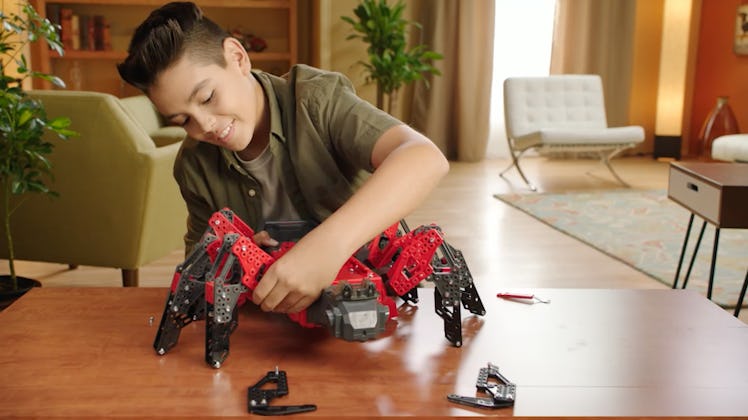The Unexpected Case for Tough Toys
The following was produced in partnership with our friends at Spin Master. ADVERTISEMENT Most architects will tell you they grew up building structures out of blocks as children. Engineers played with Erector Sets and built model rockets. App developers were probably the first kids on your street to play with computers and the kind of programmable... View Article

The following was produced in partnership with our friends at Spin Master.
Most architects will tell you they grew up building structures out of blocks as children. Engineers played with Erector Sets and built model rockets. App developers were probably the first kids on your street to play with computers and the kind of programmable toys created by Meccano (the company formerly known as Erector Set). These high-achieving adults clearly gravitated to toys that let their minds roam as kids. But did the toy have anything to do with their development?
Isabelle Cherney, Dean of the School of Education and Social Policy at Merrimack College in Massachusetts, thinks so. “You can actually develop all kinds of skills by having the right toys and playing with those,” she says. “It’s exciting. The brain is a wonderful organ.” A Michigan State University survey of American adults in the STEM fields backs this up, showing that lifelong exposure to hands-on arts and crafts can yield “significant impacts” — leading to more patentable inventions and founding new companies. Whether toys can specifically help develop measurable increases in intelligence is still up for debate.
What we know for certain is that when playing with complex toys, many of the effects on a child become obvious at the point of failure. “Some complex toys are particularly good at teaching the child that if you try hard and it doesn’t work the first time, you can try again and actually solve the problem eventually,” says Cherney. “They learn that knowledge doesn’t come from talent, but from learning. And that makes a huge difference.”
Recent studies show that “construction play” can help kids foster motor skills, spatial skills, and language skills that ultimately help boost a child’s set of STEM skills. And often creativity is developed through toys that don’t come complete with a complicated set of instructions.
The MeccaSpider is a giant robotic spider that you build and control with a smartphone — the kind of complex toy that Meccano, formerly known as Erector Set, has been making for decades and has been shown to foster motor skills, spatial skills, and language skills.
“If the only kind of play materials you have are so structured and narrow that there’s only one way to play with them, then you’re on the edge of play,” says Doris Bergen, professor emeritus of education psychology from Miami University in Ohio. “You might still enjoy doing it. But your creative aspects are not really being put into it.”
Failure teaches another important lesson — perseverance. Cherney says kids look for struggle, and when they don’t get it, they get bored and lose interest. She says they intuitively understand and enjoy their growth as they slowly learn the steps that will help them succeed next time.
Fostering this creative frustration isn’t as simple as finding the perfect toy (although having a toy like the MeccaSpider helps). For one, parents need to back off. When kids struggle, don’t be right there with the answer, Cherney says. Instead, sit down on the floor on their level, place a hand on their head, and lead them there.
“You don’t even have to say much so that they know you’re there in case they really, really, really get frustrated,” Cherney says. “Let them do something wrong and encourage them to continue to try. Be a guide.”
Meccano-Erector’s M.A.X. robot takes STEM play to the next level with fully-interactive capabilities including voice-control.
Parents also need to find “Goldilocks” toys — tough, but not too tough. In other words, don’t buy your 6-year-old the 7,500-piece Millennium Falcon Lego set just yet. Frustration with complex toys is good only at the right skill level. “You always ask a little more than what they can and you help them get there,” Cherney says, but too much too soon can cripple a child’s confidence and cause them to give up and stop trying difficult things altogether.
Remember, it’s supposed to be fun. “The goal of a toy, if it’s really a toy, is to play,” says Barry Kudrowitz, associate professor of design at the University of Minnesota. “You learn things from playing. You learn physical skills, you learn emotional skills and mental skills. But the primary goal of a toy should be to have fun.”
This article was originally published on